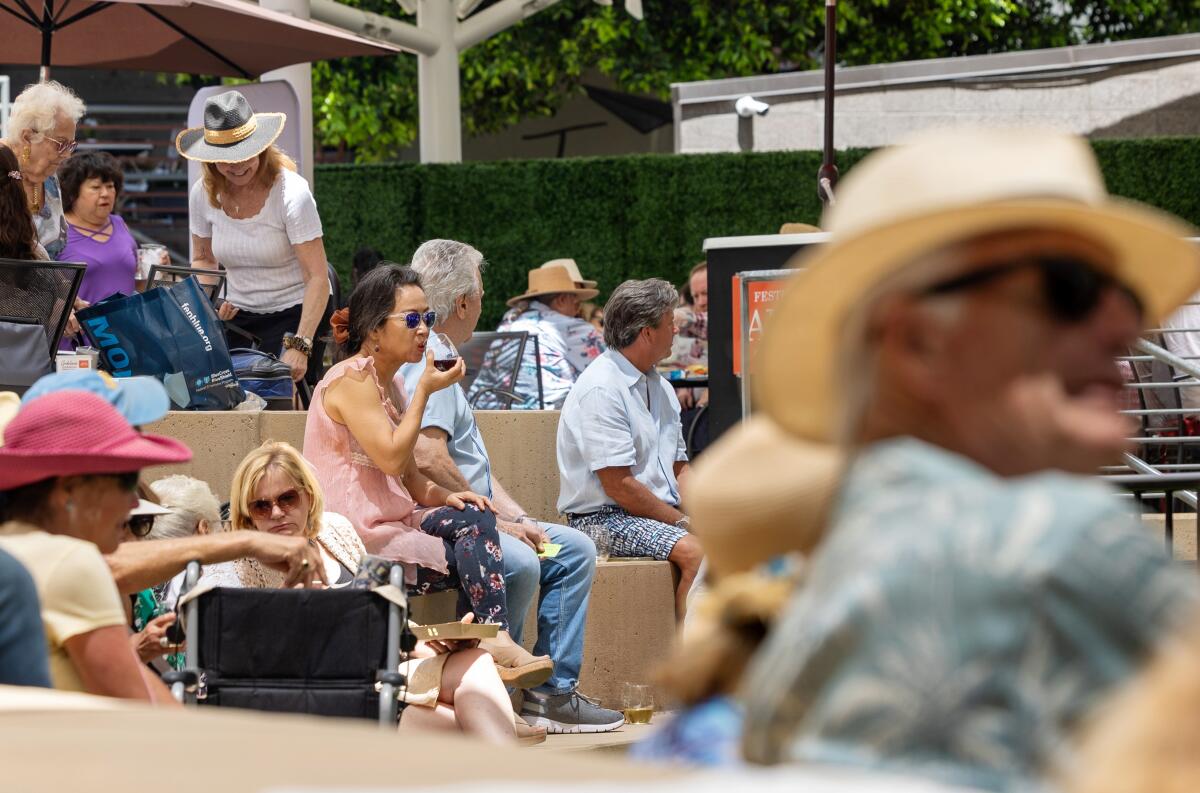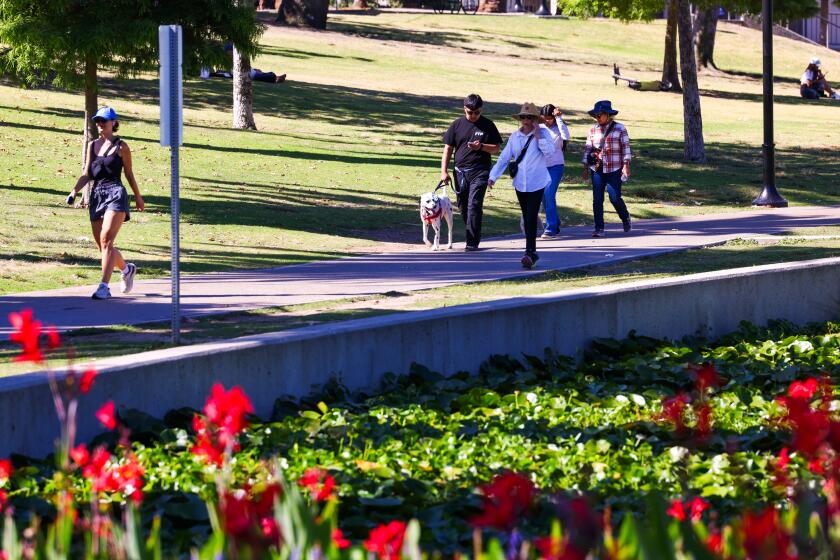COVID surging in California. Is it time to bring back masks, hand sanitizer? What experts say

With California facing its worst summertime spike in COVID-19 illness in two years, is it time to for people to beef up precautions?
As the pandemic fades, many people have abandoned the basic tools for fighting the coronavirus — masks, physical distancing, hand sanitizer and aggressive hand-washing.
Now, a number of health officials, from California to New York, have been suggesting that more people consider doing those things, given the jump in coronavirus infections.
There are no signs agencies are about to bring back any sweeping mandates, given how severe illness and hospitalizations remain lower than last year. But the recommendations for added precautions underscore the concerns about how fast COVID is spreading this summer, causing many to become sick for many days.
California is in the middle of its worst summer COVID wave in terms of infections since 2022. For the week that ended July 20, the state recorded “very high” levels of the coronavirus in wastewater for the third straight week — worse than the peak from last summer and 93% of the peak from the summer of 2022. Coronavirus levels were already at “high” levels the preceding four weeks.
In Los Angeles County, coronavirus levels in wastewater are at 44% of last winter’s peak for the 10-day period that ended July 20. For the 10-day period ending July 13, viral levels in wastewater were at 40% of last winter’s peak.
And coronavirus cases continue rising in L.A. County. For the weekly period that ended July 28, there were an average of 452 new cases a day; that’s up from 413 the prior week. Cases are an undercount, as they only include tests conducted at medical facilities and don’t account for at-home tests or the fact that fewer people are testing when sick.
“Given the increased transmission of new strains of COVID-19, residents should continue taking common-sense precautions to avoid transmitting or becoming ill with COVID-19,” the Los Angeles County Department of Public Health said in a statement Thursday.
“This includes washing their hands often or using hand sanitizer, especially before eating, after sneezing or coughing, or when in public places, and considering mask use when in crowded indoor spaces,” the department said.
The precautions are especially important for those at higher risk of severe illness, such as seniors 65 and older, people with underlying health conditions and those not up to date on their vaccinations.
With COVID numbers in California spiking this summer, experts are warning the new FLiRT strains driving the spread could be around for some time.
The San Francisco Department of Public Health chimed in last week, saying on social media that “with COVID-19 circulating, please consider wearing a well-fitted mask in crowded indoor spaces.”
Earlier in the month, the New York City Department of Health and Mental Hygiene posted: “Consider wearing a mask, especially in crowded indoor settings and particularly if you are over 65 or have a medical condition that puts you at risk for severe COVID-19, or are around others who are.”
It’s reasonable to keep a mask in your pocket and put it on if someone around you starts coughing, like on an airplane, said Dr. Peter Chin-Hong, a UC San Francisco infectious diseases expert.
Recommendations to consider masking are not new. And they carry less urgency than messaging issued by L.A. County two winters ago that “strongly recommended” masking for everyone in indoor settings, which after about two months returned to the suggestion that masking should be a matter of personal preference.
Some health officials are going a bit further. Marin County on July 26 issued a statement that “recommends older residents wear a mask in indoor public settings until the summer surge is resolved.” Nearly everyone hospitalized with COVID in Marin County is 65 or older, and the number of coronavirus-positive hospitalizations there have doubled in the past month.
Health officials have widely telegraphed that the era of mask mandates in indoor public settings is long gone given that hospitals are no longer at risk for being overwhelmed by COVID-19 patients as they were in the first two years of the pandemic.
Los Angeles County, for instance, ended its wide-ranging mask mandate more than two years ago. Federal rules requiring masks on planes also ended two years ago.
The only mask orders that have reemerged in parts of California have been in healthcare facilities. For about five weeks last winter, L.A. County required healthcare personnel and visitors to wear a mask while in contact with patients, or while in areas where they are being cared for, in licensed healthcare facilities that provide inpatient care.
COVID’s spread is being aided by people who are still going to work or traveling while sick. Doctors say it’s important for people who are sick to avoid putting others at risk.
With COVID-19 becoming less likely to cause hospitalizations and deaths, and with vaccines and anti-COVID medicines such as Paxlovid widely available, the illness is generally less risky now.
“COVID-19 remains a health threat, but it makes far fewer people seriously ill because our immunity is stronger, with over 98% of the U.S. population now having some protective immunity against COVID-19,” the U.S. Centers for Disease Control and Prevention said earlier this year. “In 2022, COVID-19 accounted for more than 245,000 deaths. Last year, that number was around 76,000.”
At least 47,000 COVID-19 deaths have been reported nationally since the start of the respiratory virus season at the beginning of October, according to the CDC. The minimum preliminary estimate of flu deaths over the same period is at least 25,000.
In its general advice on respiratory viruses, the CDC says core prevention strategies include staying up to date with immunizations and doing what you can to keep air cleaner, such as gathering outdoors, opening windows to allow in fresh air and filtering indoor air.
Additional strategies include masking and maintaining physical distance from people. All of the strategies, the CDC says, are especially helpful when respiratory viruses are causing a lot of illness and you or the people around you are at higher risk for severe disease.
Health officials stress that COVID-19 remains something people should try to avoid getting, using sensible measures such as avoiding those who are sick and urging them to stay at home. The latest subvariants of COVID-19 are even more contagious than older versions, and people are far more likely to get COVID-19 than the flu.
COVID can still cause miserable symptoms, including intense fatigue, a painful sore throat, severe coughing and fever. And the virus still leads to hundreds of deaths nationally each week.
Every experience also still poses a risk of long COVID. And while the risk has decreased since the start of the pandemic, thanks to the development of vaccines and the evolution of the virus, it is nonetheless significant.
In Los Angeles County, coronavirus-positive hospitalizations are increasing but so far remain below last year’s summer crest. There were an average of 389 coronavirus-positive patients per day for the week that ended July 27, double the amount from a month ago. That’s about two-thirds of the peak from last summer and one-third the peak from the summer of 2022.
Deaths remain relatively stable — about one to two per day in L.A. County — but it can take weeks or months for COVID fatalities to show up in public data because of the time it takes for death certificates to be processed.
And with the school year returning in large swaths of California in the coming weeks, it would be wise to do what you can to avoid getting sick, health officials say. The first day of school in the Los Angeles Unified School District is Aug. 12.
“Being proactive to prevent illness can significantly reduce the risk of travel disruptions, last-minute cancellations, and inadvertently spreading illness, ensuring a more enjoyable end of summer season for everyone,” the L.A. County Department of Public Health said.
More to Read
Sign up for Essential California
The most important California stories and recommendations in your inbox every morning.
You may occasionally receive promotional content from the Los Angeles Times.













